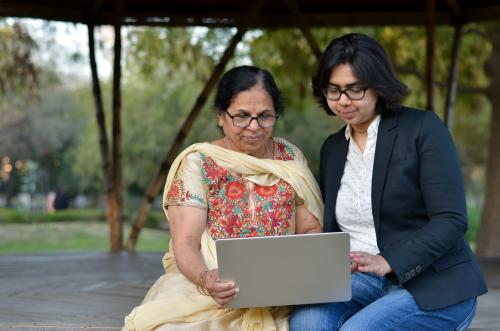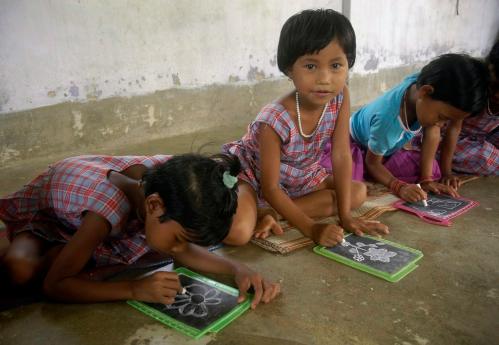Imagine a room full of university students in India: young men and women sitting shoulder to shoulder in equal numbers. Fast forward 10 years: 8 out of those 10 men are likely to be active in the work force compared to only 3 out of 10 of the women. This example illustrates one of the great conundrums of India’s female labor force participation: a low and rapidly declining participation rate (even before the COVID-19 pandemic) despite economic growth and women’s increasing enrollment in tertiary education. This policy brief demonstrates how a digital mentoring policy and practice ecosystem could attract a range of stakeholders to support the transition of young Indian women from tertiary education into the labor force.
Young women in India face numerous and intersecting challenges that affect their workforce participation, chief among them, the triple impact of a skills deficit, a network gap, and restrictive gender norms that limit women’s work readiness and career aspirations. Making demonstrable changes in women’s labor participation in India hinges upon interrupting these three threats. This policy brief, based on a case study of the Mentor To Go program implemented with 1,000 young people between March 2020 to April 2021, demonstrates how digital mentoring reached marginalized girls across India and helped them acquire work readiness skills, connect with a diverse mentor network, and experience more egalitarian gender norms, thus showing promise to tackle all three problems. Building from the findings, recommendations are specified for policies and practices to improve the ecosystem of stakeholders and stakeholder-driven support to promote female labor force participation.
Watch 2021 Echidna Global Scholar Arundhuti Gupta discuss her research focused on how to leverage digital mentoring to increase women’s workforce participation in India.
The three to four years of tertiary education offer government, educators, employers, and civil society together a unique opportunity to empower young women through skills, networks, and norm changes. The return on investment of 15 cumulative years of education will be much higher when we ensure that young women can transition into and thrive in the labor force.
Photo credit: Mentor Together.






